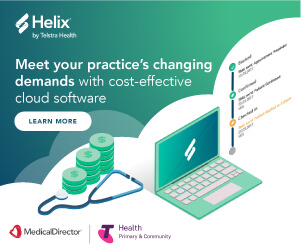Are pop-up clinics the future of healthcare?
One of the most important innovations that has arisen from the COVID-19 pandemic has undoubtedly been the pop-up testing and immunisation clinic. Pop-up clinics, staffed by doctors, nurses and volunteers, can operate from any large-scale, publicly-accessible space, such as a carpark, town hall or even a sports stadium.
Since mass COVID-19 testing was mandated across the world, pop-up clinics have played an integral role in relieving the strain on an overwhelmed healthcare system by providing testing and vaccinations on a large scale.
By focusing on one purpose (testing and/or immunising), and doing it well, pop-up clinics have been able to treat hundreds of patients a day. For the virus that has affected millions of people and required rapid testing to try and curb its spread, this has been an essential part of the global coordinated response to the pandemic.
Managing influenza season in record numbers
It’s not just COVID-19 that pop-up clinics are helping with, however. As the UK entered into influenza (flu) season towards the end of 2020, the Government announced a new initiative designed to protect the most vulnerable members of our community – an extension of the free flu vaccine to anyone over the age of 50.
By encouraging a greater number of vaccinations, the Government aims to reduce the burden on the healthcare system, including GPs, hospitals and virus testing laboratories – of particular importance while COVID-19 cases continue to overwhelm them. Many people who are vulnerable to flu are also vulnerable to COVID-19, so it’s vitally important their health is protected as much as possible.
In the UK, 30 million people are eligible for the flu vaccine for the 2020 to 2021 season. Public Health England (PHE), the National Health Service (NHS) and the Department of Health and Social Care (DHSC) have a target of 75% uptake across all eligible groups, along with the vaccine being made available to all frontline health and social care workers.
To help manage the load on the healthcare system, patients are being invited to pop-up clinics to have the vaccine administered. Patients fitting the criteria will be invited by letter or SMS, complete with a barcode or QR code to identify them.
Advantages of pop-up clinics
One of the biggest advantages of the pop-up clinic model is that it makes efficient use of GPs’ time. GPs are one of the scarcest resources in the healthcare system, yet they deliver the vast majority of flu vaccinations every year. In the 2019-20 season, more than 14 million adults and children were vaccinated against the flu across the UK. If this workload can be diverted to pop-up clinics, then GPs are freed up to focus on more urgent or complex care.
Pop-up clinics can help to promote healthcare equality by enabling healthcare to be within everyone’s reach. If pop-up clinics are located in close proximity to residents in any community, then people are less likely to be disadvantaged by where they live, whether or not they own a car, or how mobile they are.
Pop-up clinics are generally located in well-connected public venues, and often allow procedures to be done inside the patient’s car, reducing the need for them to be moving about and interacting with multiple people. This can also help allay fears in people who may be hesitant to visit a medical practice during a pandemic.
In addition, the productivity of traditional methods of administering vaccines has been negatively impacted by the recent rules around social distancing and infection control. While everyone in the healthcare industry has tried to adapt to these restrictions as much as possible, a pop-up clinic is specifically designed with these measures in mind, so in many instances may be better prepared.
Ensuring pop-up clinics meet the needs of the healthcare industry
With many more pop-up clinics set to open across the UK to cater for the rollout of the free flu vaccine, how do we ensure these clinics are set up for success? Pop-up clinics must be designed to provide a viable long-term solution for the healthcare industry, and this will depend on a number of factors.
Clinics need to be able to:
- Support a high volume and flow of patients in a sustainable way
- Have the ability to deliver vaccinations in a limited timeframe
- Operate in a manner which promotes patient and staff safety
- Ensure high-risk, vulnerable members of the community are prioritised
- Reside in areas that are local and accessible
- Offer flexible modes of delivery such as the option for patients to stay in their cars if possible
- Work closely with GPs to ensure patient records are updated
- Communicate effectively with the community to set expectations, and resolve concerns around clinic attendance and data security.
Technology plays a vital role in the success of pop-up clinics
It’s clear that such an ambitious and large-scale health initiative requires purpose-built technology to ensure its success.
Those administering the vaccinations at pop-up clinics need to be able to use software on a mobile device, such as a tablet, and record sensitive patient information in a secure way.
They must be able to identify the patient, bring up their details, register their consent and record information about the immunisation provided. Given the expected throughput of patients, any software solution needs to allow for the rapid recording of all these details, along with enabling safe and secure data storage.
As the immunisation process is facilitated outside the patient’s usual medical practice, pop-up clinics must work with practices so that important health information can be transmitted back to a patient’s GP, allowing their medical record to be kept up-to-date. This would also enable the GP to receive their eligible funding.
COVID-19 has opened up the world’s eyes to the ongoing need for testing and vaccinations on a scale that’s never been experienced before. Pop-up clinics will continue to play a critical role in testing and immunising the general public on a massive scale, alongside more traditional healthcare facilities.
To achieve the Government’s ambitious immunisation targets, we need to ensure that pop-up clinics are equipped with the infrastructure and processes to be able to manage large numbers of patients quickly and safely. Technology will no doubt be an important factor in achieving this.









